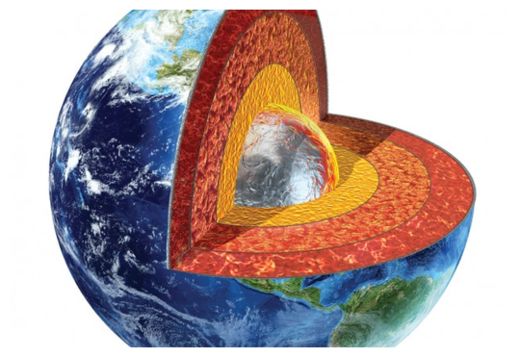
© Leonello Calvetti/Shutterstock
Researchers have, for the first time, experimentally simulated the pressure conditions of the Earth's deep lower mantle - an achievement that could shed new light on the planet's evolution, according to a study published Friday in the online edition of the journal
Scientific Reports.
Experts from the
Carnegie Institution and the
University of Illinois managed to use their simulation to measure thermal conductivity in this region of the mantle, which is located some 400 to 1,800 miles below the Earth's surface.
Using a newly-developed measurement technique, the study authors found heat transfer is lower than previous predictions had established. In fact, they report the total heat flow across the planet is approximately 10.4 terawatts, which is roughly 60 percent of the power used by people on a daily basis. They also discovered conductivity has less dependence on pressure conditions than had been previously predicted.
"The lower mantle sits on top of the core where pressures range from 230,000 to 1.3 million times the pressure at sea level," lead author Douglas Dalton said in a statement. "Temperatures are like an inferno - from about 2,800°F to 6,700 °F. The major constituents are oxides of magnesium, silicon and calcium. Heat transfer occurs at a higher rate across materials of high thermal conductivity than across materials of low thermal conductivity, thus these low thermal conductivity oxides are insulating."
According to Dalton and his colleagues, the atoms that comprise the primary mantle materials are solid solutions and are in a disordered arrangement. As a result, that affects the way in which they conduct heat. Previously, the impact of the arrangement on the way heat was conducted had only been estimated during experiments conducted at low pressure. The pressure dependence on thermal conductivity had not yet been addressed in disordered materials.
"We squeezed the samples between two diamond tips in an anvil cell and measured the thermal conductivity of the samples, debuting a technique called time-domain thermoreflectance," explained co-author Alexander Goncharov of the Carnegie Institution.
"We went up to 600,000 times atmospheric pressure at room temperature," he added. "This technique allows us to measure the thermal properties of the material from the change in the reflectance of the material's surface, thus avoiding the need of contacting the material of interest as required by conventional techniques. We then compared the results to theoretical models."
Furthermore, the researchers were able to demonstrate there is less dependence of thermal conductivity on pressure than had been previously predicted. Their calculations showed there is an estimated total heat flow of 10.4 terawatts across the Earth at the core-mantle boundary.
"The results provide important bounds on the degree to which heat is transferred by convection as opposed to conduction in the lower mantle," said Russell J. Hemley, director of Carnegie's
Geophysical Laboratory. "The next step will be to examine effects of different mineral components on the thermal conductivity and to better understand the atomic scale basis of convective motion of these materials within the broader context of mantle dynamics."
"The results suggest that this technique could really advance other high pressure and temperature studies of the deep Earth and provide a better understanding of how Earth is evolving and how materials act under the intense conditions," Goncharov added.
Reader Comments
to our Newsletter